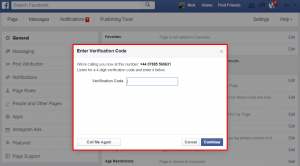— November 11, 2018

geralt / Pixabay
The business world can be unforgiving. With competition becoming increasingly global and technology accelerating the pace of change, the modern workplace can leave people feeling demoralized. Unsurprisingly, declining morale has a negative impact on both individual and team performance. Disengaged employees tend to be less productive and more likely to seek new opportunities elsewhere.
Fortunately, it doesn’t have to be that way. With proactive leadership and forward thinking policies, companies can explore new ways of keeping their best employees engaged and focused on results. Here are a few practical suggestions for fighting back against the specter of low morale.
Recognize Good Work
One of the easiest ways to keep employees inspired and engaged is to recognize their achievements and contributions. This may seem like a minor gesture, but it demonstrates to them that the work they do matters. According to Gallup research, 2 out of 3 employees don’t think they receive enough recognition for what they do, which is quite a problem considering that people who feel underappreciated are twice as likely to quit. Simply giving out this recognition is a low-cost and easily-implemented strategy, making it surprising that so many organizations fall short in that regard.
While recognition from leadership is valuable, receiving praise from colleagues is also effective for employees to feel useful in a team. These acts of recognition, even as small as a shout out in a meeting or an email expression of gratitude or praise, demonstrate that the person’s efforts are appreciated and valued. Over time, they help to create trust and camaraderie within a team, helping employees become emotionally invested in their teammates and more likely to be engaged in their collective success.
Team success should also be recognized as well. While it’s important for team members to have a sense of their value as individuals, the collective experience of working together toward a common goal helps them to create a sense of motivation and belonging. When the team succeeds, everyone succeeds.
Involve Employees
Employees like to be involved in decisions that affect them. Millennials in particular are accustomed to working in a more collaborative environment and expect organizations to be more responsive to their needs and ideas than previous generations. Simply dictating terms to employees without providing them with an opportunity for feedback or input could lead them to feel powerless and become disengaged. With many organizations trying to promote a broader culture of collaboration, processes should already be in place to facilitate their greater involvement. When people feel like they have a say and a stake in what the company does, they’re more likely to be engaged and committed to its success.
One example of how employees might be able to contribute to solutions is in the area of cost savings and process improvements. Since they are the ones working day in and day out to make the organization’s goals a reality, they tend to have a thorough understanding of how the company works and which of its processes can be improved. Leadership may well be surprised at the number of viable ideas that could emerge from brainstorming sessions with employees about how the organization might be improved.
Increase Transparency
Transparency is crucial for any workplace. Organizations and leaders that deliberately withhold information from employees due to a lack of trust or because they think it will somehow give them more control are in for a rude surprise when they’re faced with low morale and greatly diminished productivity. People want to know how their work connects directly to company performance, preferably in quantifiable terms rather than an abstract sense. They want to see real, concrete information such as financial data to show how what they are doing makes a difference. These numbers do not always have to be positive. Even if the numbers show that the organization did not reach its goals, this honest disclosure will help build trust and confidence that the information they are getting from leadership is accurate and truthful.
Additionally, employees need to feel like they are a part of a team, and when the company is competing against tough times, they grow concerned and want to know how they can help right the ship. The organizations with the consistently highest productivity are the ones with the most open lines of communication between leadership and their teams. Increasing the frequency, detail, and amount of information provided to employees will almost always produce better results than the opposite approach.
When morale in the workplace is high, people are more engaged and productive, which translates into more impactful results. By investing in strategies to demonstrate that employees are valued partners, organizations can boost morale while earning their trust and commitment. While these efforts can be further reinforced by development programs that give them the tools and skills they need to succeed, they are a good starting point to securing better engagement.
Business & Finance Articles on Business 2 Community
(53)







